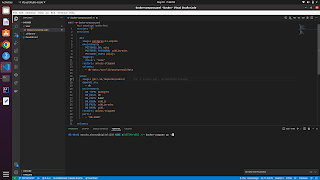Quantum Computing
A quantum computer is one that exploits quantum-mechanical interactions in order to function; this behavior, found in nature, possesses the incredible potential to manipulate data in ways unattainable by machines today. The harnessing and organization of this power, however, poses no small difficulty to those who quest after it.
Subsequently, the concept of quantum computing, birthed in the early ’80s by physicist Richard Feynman, has existed largely in the realm of theory. Miraculous algorithms that potentially would take a billionth of the time required for classical computers to perform certain mathematical feats, and are implementable only on quantum computers, as such have not yet been realized. A two-bit quantum system, recently developed by a coalition of researchers, constitutes the sole concrete manifestation of the idea.
The bit, most basic unit of information within a computer, is the building block for all data residing within. An alphanumeric character, for example, usually consumes 1 byte, or 8 bits, of memory. A 2-byte unsigned integer would be allowed to range from 00000000 00000000 to 11111111 1111111 in binary, or 0-65535 in decimal notation (0-216).
The “bit” of a quantum computer, referred to as Qubit (short for a quantum bit), might be represented as an atom. Qubits, however, possess an intrinsic and most significant quality: they may simultaneously be assigned 0 or 1, the probability of each expressed as a numerical coefficient. This ability allows quantum computers to exist in multiple states at once, called superposition by those knowledgeable of such things. Subsequently, actions may be carried out in all states simultaneously, allowing parallel operations to be performed with one processing unit. A phenomenon dubbed “entanglement” joins Qubits together in a quantum system.
Super positioning opens the way for several fascinating and potentially problematic uses for quantum computers. Factoring numbers of several hundred digits, a tactic needed to crack some encryption schemes currently in use, would take billions of years on the fastest supercomputers. Theoretically, this might take a year on quantum computers. Similarly daunting mathematical tasks, researchers speculate, will become trivial also.
The difficulty in sustaining a quantum computer lies in its nearly unavoidable contact with an external environment, interactions with which inexorably lead to collapse, termed decoherence, of the system. The use of NMR technology with fluids has produced quantum computers of a couple of bits (see History/Developments), but these systems lose coherence after a few minutes, allowing at most 1000 operations before succumbing to the thermal motion produced by the molecules in the liquid.
Type
Well there are 3 types of quantum computing system in the world.which are
1. QUANTUM ANNEALING:- Quantum annealing is best for solving optimization problems. In other words, researchers are trying to find the best (most efficient) possible configuration among many possible combinations of variables.
2. QUANTUM SIMULATIONS:- An another type of quantum machine for calculating the most difficult problems. Quantum simulations explore specific problems in quantum physics that are beyond the capacity of classical systems. Simulating complex quantum phenomena could be one of the most important applications of quantum computing.
3. UNIVERSAL QUANTUM COMPUTING:- Universal quantum computers are the most powerful and most generally applicable, but also the hardest to build. A truly universal quantum computer would likely make use of over 100,000 qubits some estimates put it at 1Million qubits. Remember that today, the most qubits we can access is not even 128. The basic idea behind the universal quantum computer is that you could direct the machine at any massively complex computation and get a quick solution. This includes solving the aforementioned annealing equations, simulating quantum phenomena, and more.
History
- The spark of quantum computing was struck by Mr. Richard Feynman. In 1981 at MIT,
- In 1994, Peter Shor developed his algorithm allowing quantum computers to efficiently factorize large integers exponentially quicker than the best classical algorithm on traditional machines.
- In 1996, Lov Grover invented a quantum database search algorithm that presented a quadratic speedup for a variety of problems. Any problem which had to be solved by random or brute-force search could now be done 4x faster.
- In 1998, a working 2-qubit quantum computer was built and solved first quantum algorithms such as Grover’s algorithm. The race into a new era of computer power began and more and more applications were developed.
- Twenty years later, in 2017, IBM presented the first commercially usable quantum computer, raising the race to another level.



Comments
Post a Comment
Please give us your valuable feedback